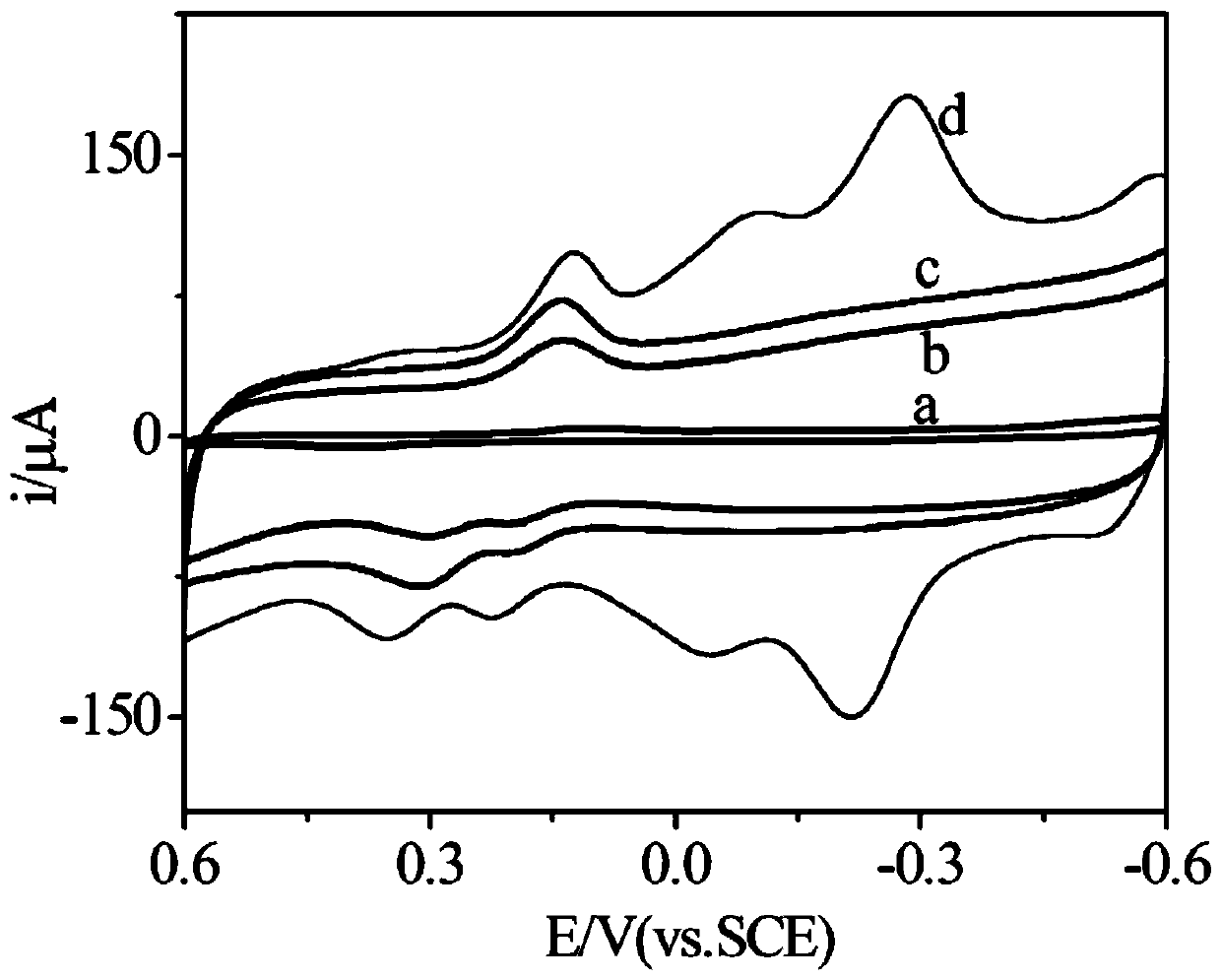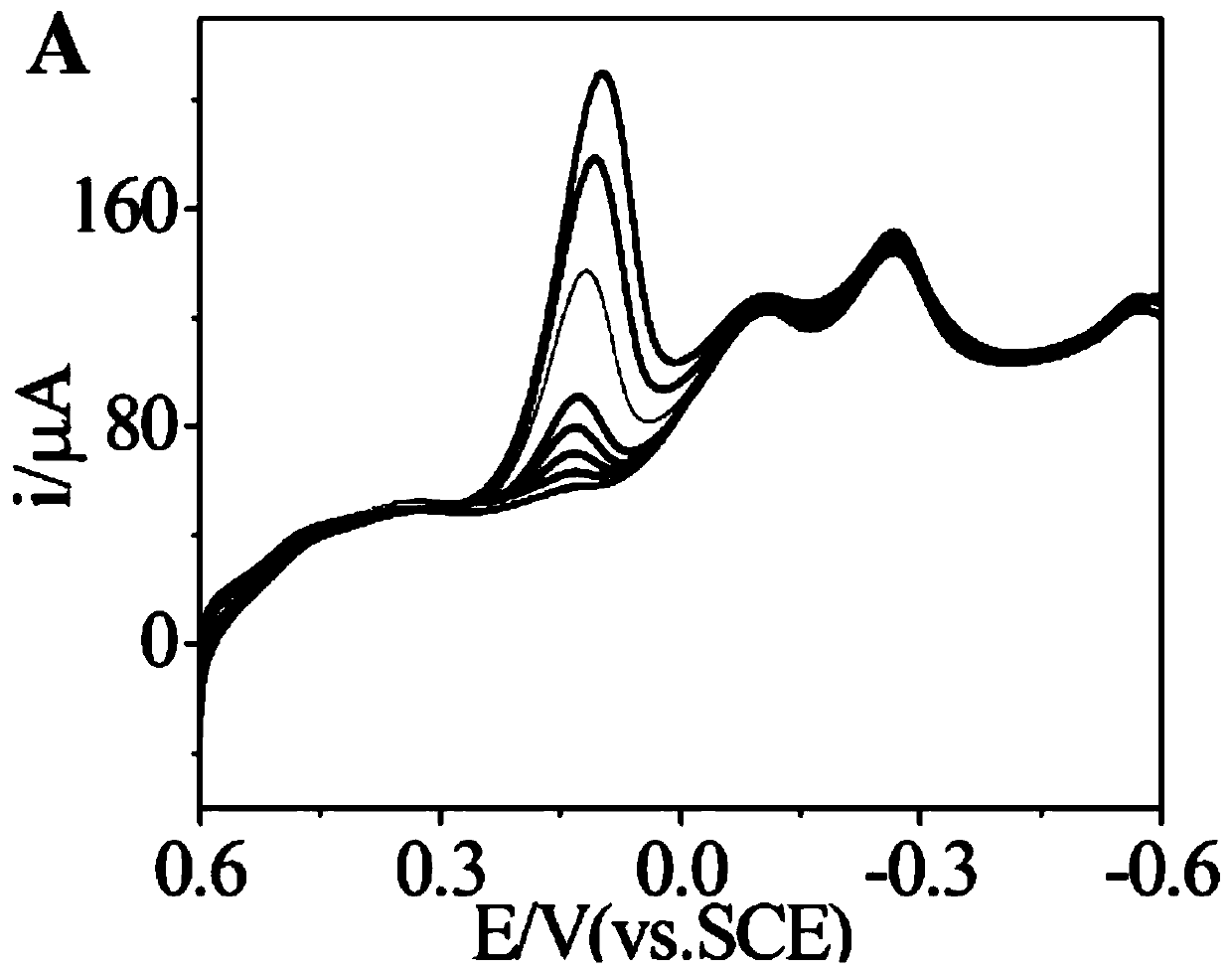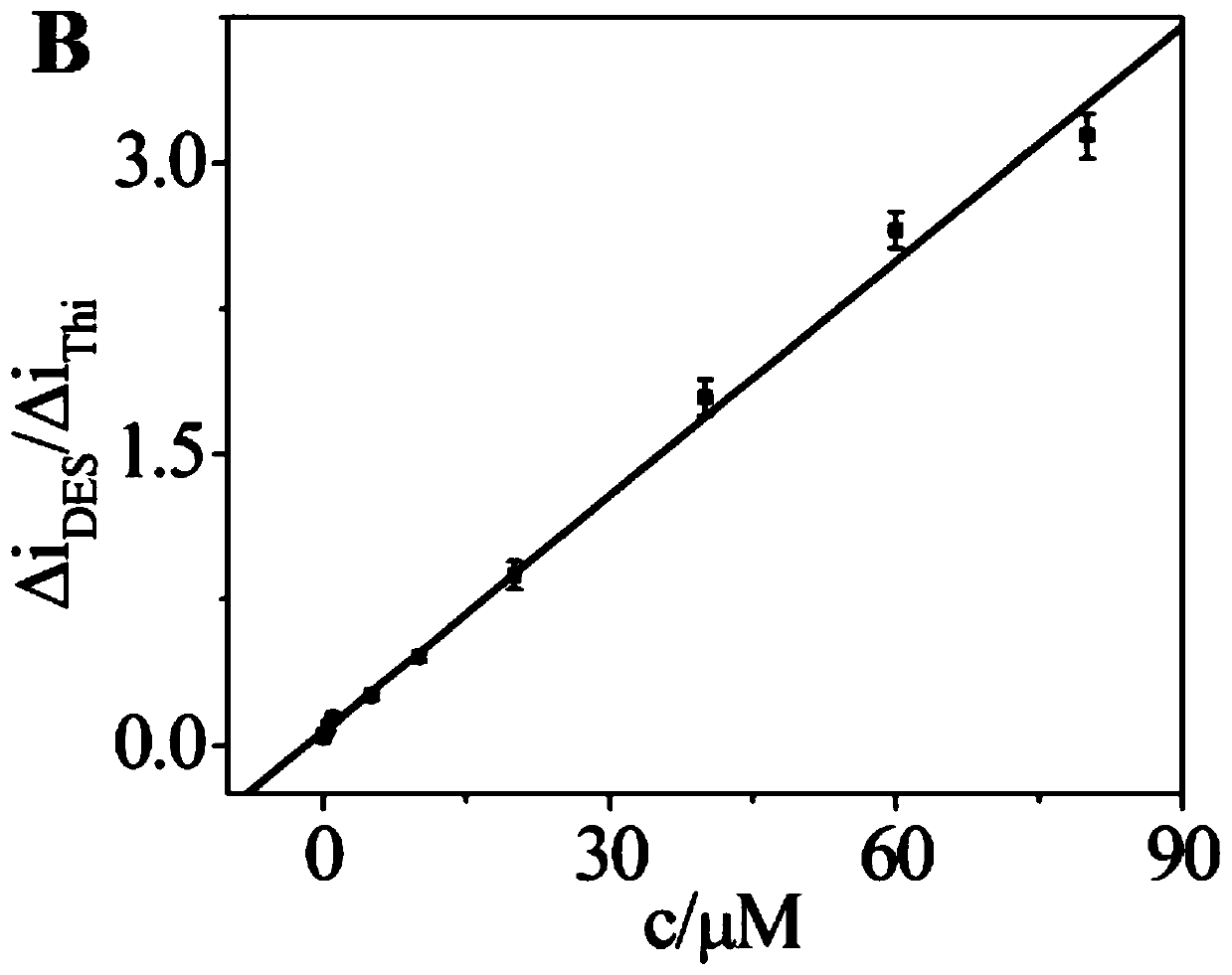Nitrogen-doped graphene-thionine-gold nano composite material and electrochemical sensor thereof, preparation method of nitrogen-doped graphene-thionine-gold nano composite material, and preparation method and application of electrochemical sensor
A technology of nitrogen-doped graphene and composite materials, applied in the direction of material electrochemical variables, scientific instruments, analytical materials, etc., can solve the problems of expensive, single signal of electrochemical sensors, affecting detection accuracy and stability, etc.
- Summary
- Abstract
- Description
- Claims
- Application Information
AI Technical Summary
Problems solved by technology
Method used
Image
Examples
preparation example Construction
[0021] The invention provides a method for preparing a nitrogen-doped graphene-thionine-gold nanocomposite material, comprising: ultrasonically conducting nitrogen-doped graphene NG, thionine Thi, a gold source, and a reducing agent under light-proof conditions reaction to prepare nitrogen-doped graphene-thionine-gold nanocomposites NG-Thi-AuNPs.
[0022] In the above preparation method, the consumption of each material can be selected in a wide range, but in order to further improve the accuracy, stability and sensitivity of the detection results of the electrochemical sensor made; preferably, NG, Thi, gold source, The dosage ratio of reducing agent is 2mg: 2×10 -3 -3×10 -3 mmol: 0.025-0.075mmol: 0.05-0.15mol, the molar weight of the gold source is calculated by the molar weight of gold atoms contained.
[0023] In the above preparation method, the condition of ultrasonic reaction can be selected in a wide range, but in order to further improve the accuracy, stability and s...
preparation example 1
[0039] Preparation of NG-Thi-AuNPs nanocomposites:
[0040] First disperse nitrogen-doped graphene NG (the content of nitrogen element is 3wt%) in water and ultrasonic 30min to obtain NG solution; take 2mL 1mg / mL NG solution, add 5mL 0.5mmol / L Thi aqueous solution to it, then add 2mL0.025mol / L of HAuCl 4 4H 2 O aqueous solution, then add 1 mL of 0.1 mol / L ascorbic acid AA solution, and sonicate for 2 hours in the dark (the power of the ultrasonic reactor is 40KHz). The reaction system was centrifuged at 9000 rpm for 15 min, the precipitate was washed with distilled water, and dried at 60°C to obtain the NG-Thi-AuNPs complex.
preparation example 2
[0042] According to the method of Preparation Example 1, the difference is that the amount of Thi aqueous solution is 6mL, HAuCl 4 4H 2 The consumption of O aqueous solution is 3 mL, and the consumption of ascorbic acid AA solution is 1.5 mL.
PUM
| Property | Measurement | Unit |
|---|---|---|
| concentration | aaaaa | aaaaa |
| surface area | aaaaa | aaaaa |
Abstract
Description
Claims
Application Information
 Login to View More
Login to View More - R&D Engineer
- R&D Manager
- IP Professional
- Industry Leading Data Capabilities
- Powerful AI technology
- Patent DNA Extraction
Browse by: Latest US Patents, China's latest patents, Technical Efficacy Thesaurus, Application Domain, Technology Topic, Popular Technical Reports.
© 2024 PatSnap. All rights reserved.Legal|Privacy policy|Modern Slavery Act Transparency Statement|Sitemap|About US| Contact US: help@patsnap.com










